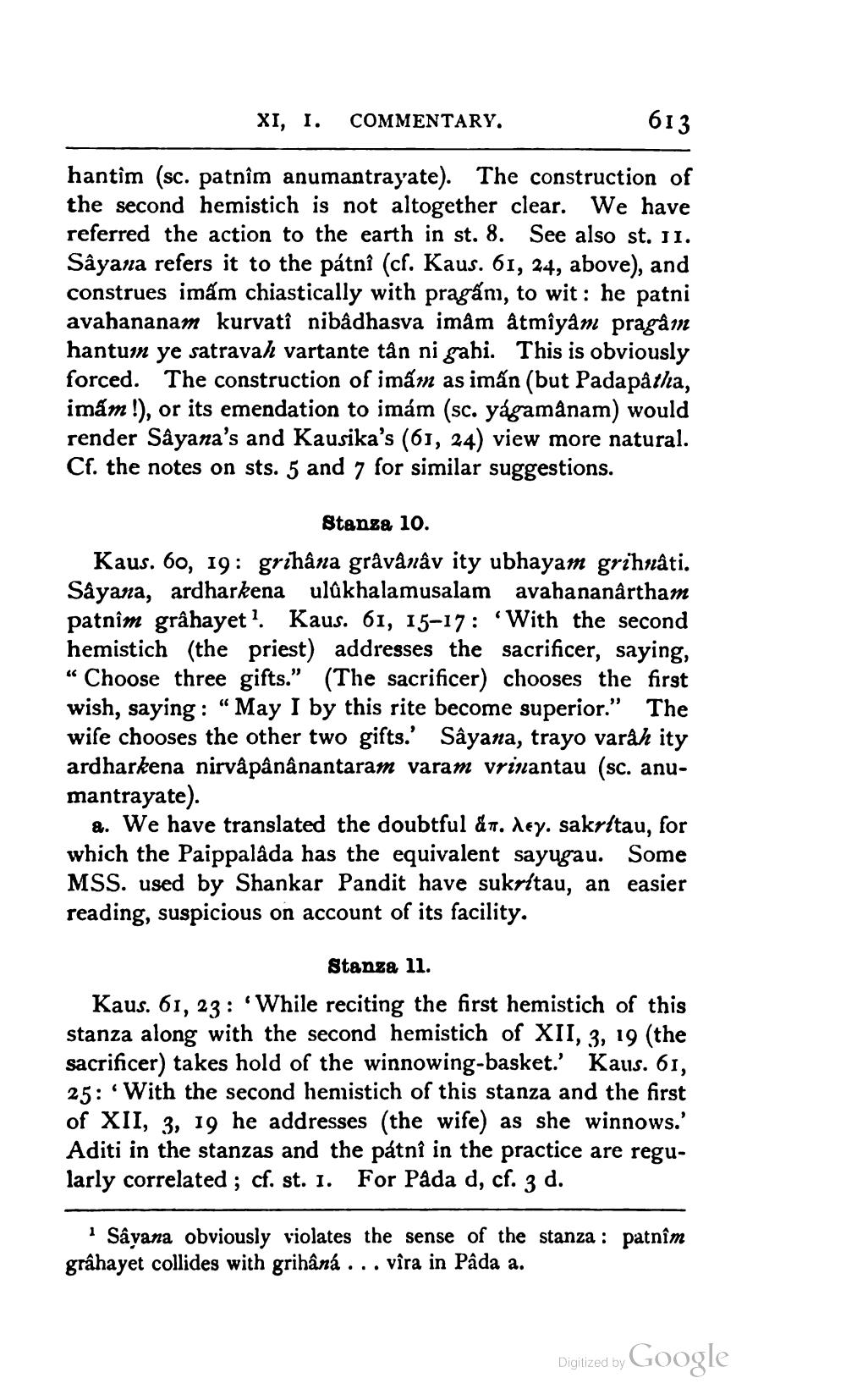________________
613
XI, I. COMMENTARY.
hantim (sc. patnîm anumantrayate). The construction of the second hemistich is not altogether clear. We have referred the action to the earth in st. 8. See also st. II. Sâyana refers it to the pátni (cf. Kaus. 61, 24, above), and construes imấm chiastically with pragấm, to wit: he patni avahananam kurvatî nibâdhasva imâm âtmîyâm pragâm hantum ye satravah vartante tân ni gahi. This is obviously forced. The construction of imam as imán (but Padapâtha, imam !), or its emendation to imám (sc. yágamânam) would render Sâyana's and Kausika's (61, 24) view more natural. Cf. the notes on sts. 5 and 7 for similar suggestions.
Stanza 10.
Kaus. 60, 19: grihâna grâvânâv ity ubhayam grihnâti. Sâyana, ardharkena ulûkhalamusalam avahananârtham patnim grâhayet1. Kaus. 61, 15-17: 'With the second hemistich (the priest) addresses the sacrificer, saying, "Choose three gifts." (The sacrificer) chooses the first wish, saying: "May I by this rite become superior." The wife chooses the other two gifts.' Sâyana, trayo varâh ity ardharkena nirvâpânânantaram varam vrinantau (sc. anumantrayate).
a. We have translated the doubtful &π. Aey. sakritau, for which the Paippalâda has the equivalent sayugau. Some MSS. used by Shankar Pandit have sukritau, an easier reading, suspicious on account of its facility.
Stanza 11.
Kaus. 61, 23: 'While reciting the first hemistich of this stanza along with the second hemistich of XII, 3, 19 (the sacrificer) takes hold of the winnowing-basket.' Kaus. 61, 25: With the second hemistich of this stanza and the first of XII, 3, 19 he addresses (the wife) as she winnows.' Aditi in the stanzas and the pátnî in the practice are regularly correlated; cf. st. 1. For Pâda d, cf. 3 d.
1 Sâyana obviously violates the sense of the stanza: patnîm grâhayet collides with grihâná... vîra in Pâda a.
Digitized by
Google




